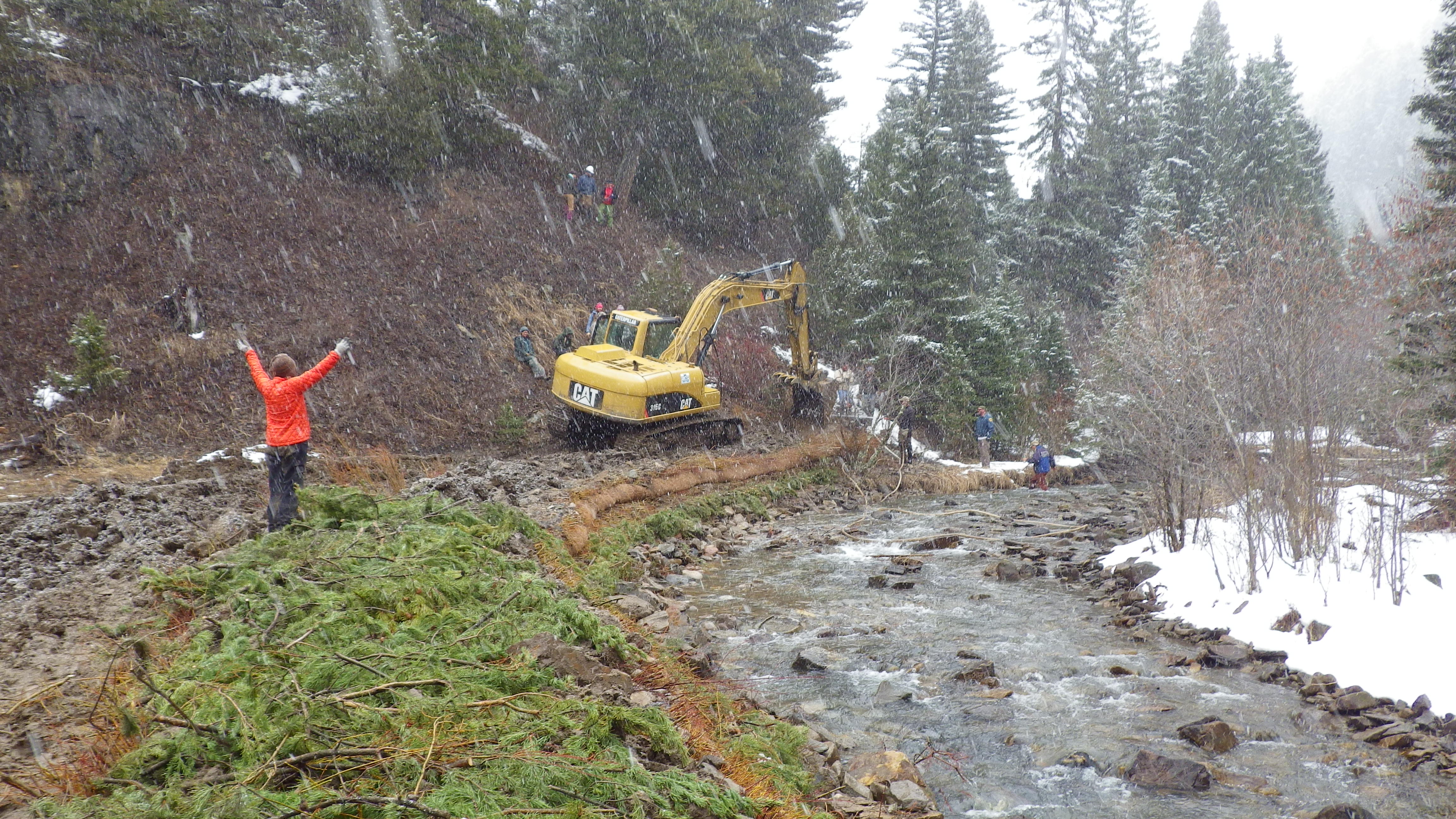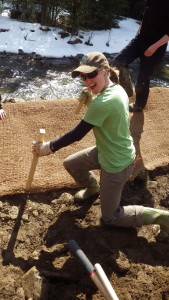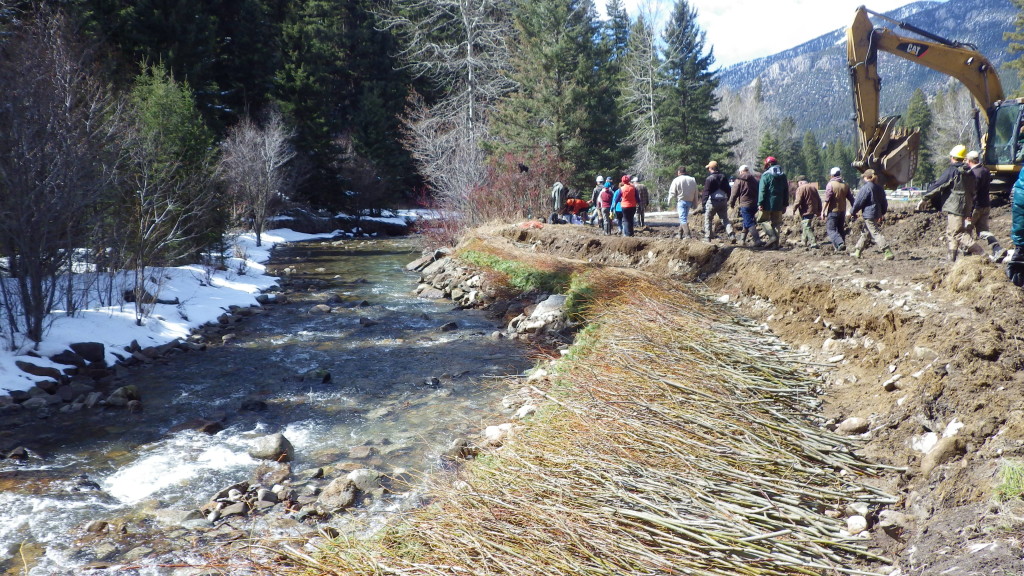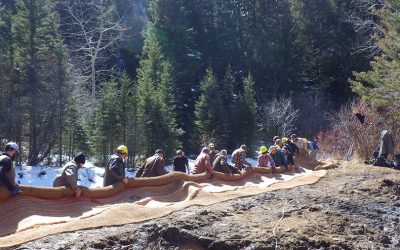The Gallatin River Task Force staff attended a Streambank Stabilization Workshop hosted by the Madison Conservation District (CD) and facilitated by Jo Christensen, United States Forest Service. The workshop combined classroom time with a work project on the Jack Creek. Here are seven new things we learned about streambank stabilization.
To volunteer for restoration work in the Gallatin Watershed, join us on Thursday, April 21st to harvest willows on the Big Sky Golf course. Email stephanie@gallatinrivertaskforce.org for more information and to learn about future opportunities.
1) Riprap isn’t the only solution. Hard structures, such as riprap or gabions, were the old paradigm in erosion prevention. Recently, the use of plants to stabilize streambanks, known as bioengineering, has gained popularity. Bioengineering utilizes biological principles to solve real world problems.
2) Bioengineering restores ecological function. The use of vegetation, such as willows, to stabilize streambanks enhances habitat for trout and other aquatic organisms. Streamside plants shade streams and maintain cool temperatures. In addition, plants provide tangible water quality benefits by taking up excess nutrients and retaining fine sediment.
3) Vegetation can withstand greater stream flows than the equations predict. To predict the effectiveness of erosion control structures, engineers compare the amount of shear stress (stress applied parallel to the material) to the capability of the design. Plants in a natural or bioengineered system slow water by breaking up the flow. A rough, vegetated surface diffuses the force of the water while a smooth, hardened surface concentrates and accelerates stream flow. In effect, healthy plant communities “take the teeth out of the river”.
4) Bioengineering is a temporary fix until the vegetation takes root. Bioengineered streambanks incorporate alternating layers of conifer and willow willow bundles with coir (coconut fiber) fabric burritos filled with soil. These temporary structures are intended to retain soil long enough for the willows to root. After plants have established, their complex root systems provide long-term stabilization.
5) Dormant willows have a higher survival rate. For bioengineering projects, willow stems should be harvested when they are dormant (spring or fall). Dormant stems divert energy to root production rather than leaf production. This means that the willows are more likely to establish roots, which leads to greater survival rates and eventually stable streambanks.
6) Bioengineering projects are cheaper per acre-foot than riprap. Bioengineering projects utilize natural materials that can be harvested locally. These projects require lots of handwork, but recruiting a small army of volunteers certainly helps to keep costs down.
7) Recreation management is just as important as project design. Many restoration projects are located at river access sites, where use has degraded streambank integrity. Protecting sensitive areas by concentrating and diverting use is crucial to project success. Do your part: obey signage and use established trails. The trout will thank you!





